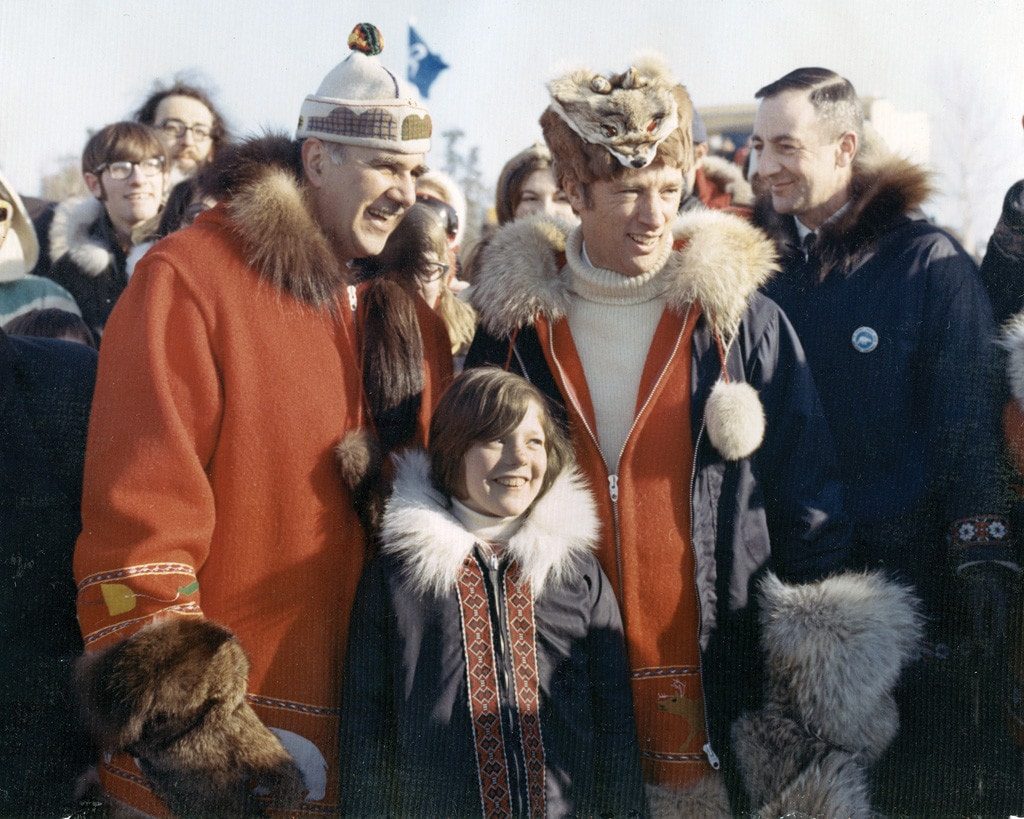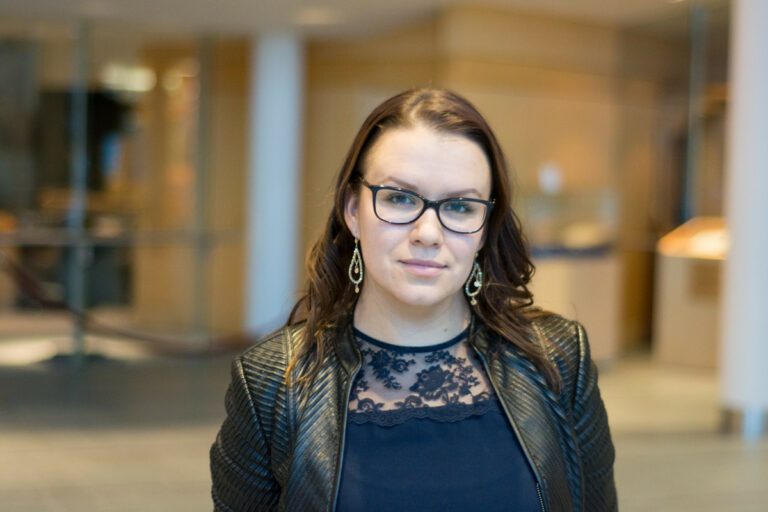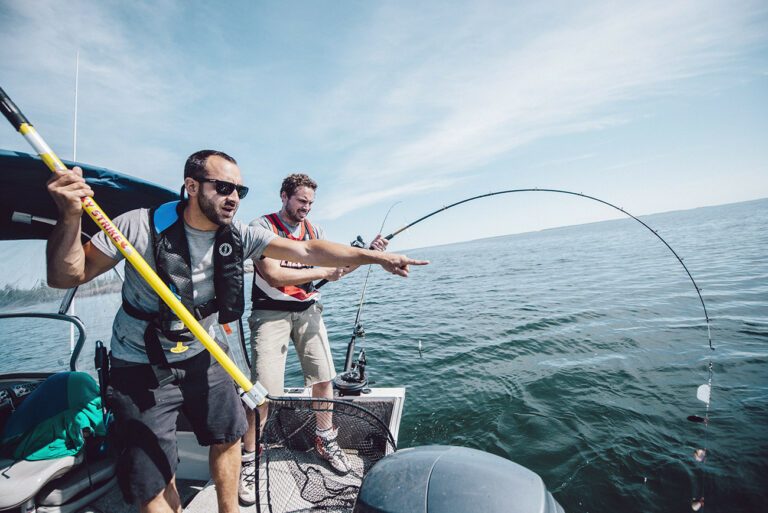Stuart Hodgson and Prime Minister Pierre Trudeau at the first Arctic Winter Games in 1970. | NWT Archives/Stuart M. Hodgson fonds/N-2010-005: 0028
Rest in Peace, Stuart Hodgson, who has passed away at the age of 91. From the magazine’s archives, January, 2015:
by Kate Guay
Stuart Hodgson is kissing my hand and telling me that I’m lovely. It’s Friday, Nov. 1, 2013. His son, Eugene, and grandson, Stuart Jr., are visiting the NWT Archives in Yellowknife with their family patriarch. Stuart’s eyes twinkle behind his glasses as he beams a warm smile at me; I’m simultaneously charmed and amused, and also thinking how different he looks at nearly 90, compared to the imposingly large man the Inuit nicknamed Umingmak (muskox) almost half a century ago.
He’s shorter and more slight, but no less charismatic than I imagined he would be. In this moment, I realize I’ve spent almost two years of my life looking at nearly four decades of his.
Stuart Milton Hodgson is the creator of the largest project I’ve ever been tasked with in my career as an archivist with the territorial government: to sit down with some 80 banker’s boxes of paper and photographs of the man who brought the seat of the territorial government to Yellowknife in 1967.
Prior to his arrival, the Government of the Northwest Territories was ruled by a commissioner and several civil servants in Ottawa, some of whom had never stepped foot in the territory. In 1966, after many public hearings, the Carrothers Commission released a report recommending Yellowknife become the capital of the Northwest Territories, and that government offices be moved there. It became Stuart’s mission to fulfill that obligation to bring the government north, and as such, he became the first commissioner to live and work here. He’s the original devolutionist.
Stuart brought a fresh perspective in addition to a new location to the territorial government. As he once said to then Prime Minister Lester B. Pearson, “I don’t know anything about government!” Pearson responded, “That’s why I’m sending you.” The new commissioner also seemed cognizant of who he was serving as a public servant. “With the Dene and the Inuit, they were there first and you’ve got to listen to what they have to say – everything wasn’t invented in Ottawa.”
I chose to become a government archivist for values I hold dear; I want to act as an agent of government transparency and accountability, to allow public access to the documents of their elected officials and bureaucrats. You can imagine the weird glee I felt as (quite likely) the first person handling and sorting correspondence of the leader of the territorial government during its infancy – a wonderful treat for a nerd like me, and a generous gesture from him and his family.
The task was lengthy and at times, tedious.
Methodically, I would gently remove rusty staples to help preserve the paper, ensuring it will be there for future generations when both Stuart and I are long gone. There was approximately 10 linear metres of paper involved. Much of it had “bad” staples.
Simply organizing it all took a long time as well. Archivists live by the credo, original order, where things are to be arranged in the fashion that the creator kept it, to provide contextual insight into the material and the way it was used. For Stuart’s papers, some of this task was simple and straightforward. However, much of it became a sifting process through a jumble of mixed texts, photographs, clippings, and mementos of not only Stuart’s time spent as commissioner but also records from before and beyond that 12-year period.
I also came across a half-finished autobiography, from which you can glean stories from his formative years in union shops in British Columbia after World War II. He started as a shop steward in the lumber mills and grew passionate about organizing unions without a communist influence: “Working night and day, seven days a week, the fight against the Communist Party became a passion for me and I rarely came up for breath,” he wrote.
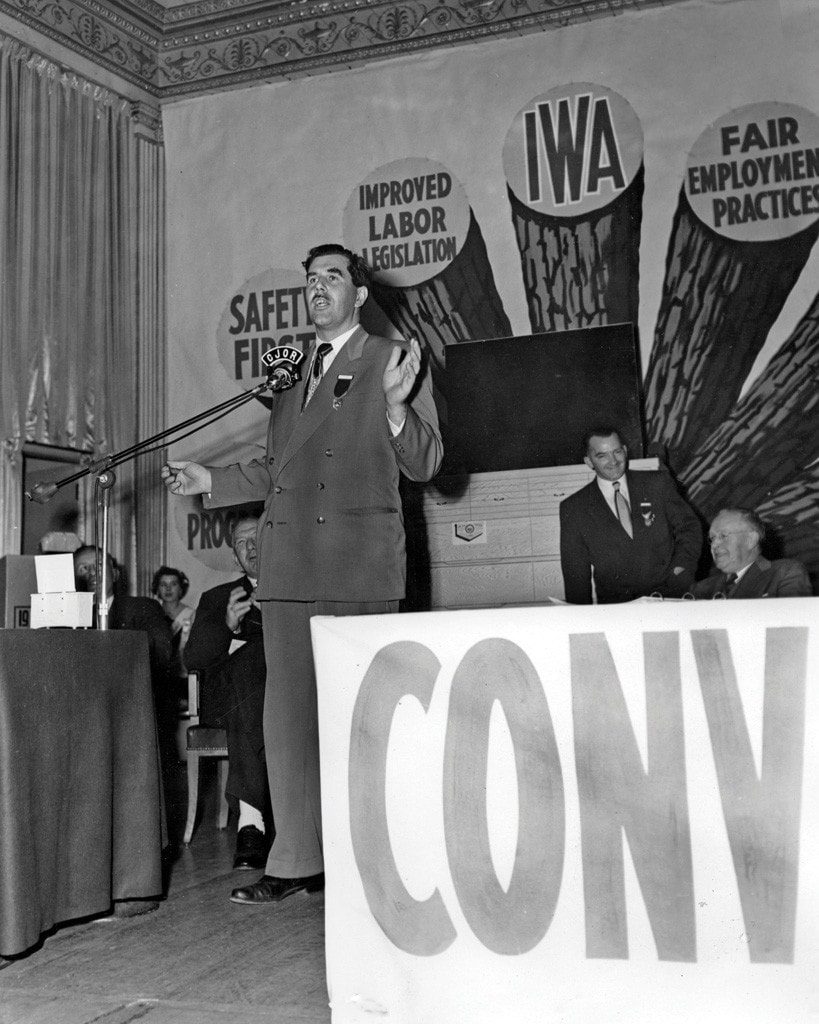
Stuart Hodgson speaks at an International Woodworkers of America gathering in the ‘60’s. CREDIT: NWT Archives/Stuart M. Hodgson fonds/N-2010-005: 0083
In February 1949, a mere four years after returning home from the war, he was elected financial secretary of Vancouver Local Union 1-217 of the International Woodworkers of America, and competed against other locals of other unions for membership. “I learned to stay close to the membership, and literally lived in the plant operations, getting to know the members and their issues, and, wherever possible, tried to solve them.” This drive and fire to understand the people he worked for would serve as a solid foundation for Stuart when he chose to enter politics 15 years later. Stuart was appointed to the NWT Council in 1964, deputy commissioner in 1965, and of course, commissioner in 1967.
As an archivist, I began to discern the main themes – what was important to him and when.
Every puzzle piece is a clue and as the pieces came together, so did the story of his life. His main correspondence files were kept in chronological binders by his secretary; but others would be sorted into multiple folders for a singular entity, such as “Royals” for his dealings with the British monarchy, or “Micheners” for his personal chit chat with the Governor General Roland Michener and wife Norah. Yet another folder captures personal documents from a 1971 trip to the U.S.S.R. with the Department of Indian Affairs and Northern Development. There was also a chance discovery of a letter to an old navy buddy, telling some blue jokes in even bluer language (which I won’t repeat here, but am happy to show you in person).
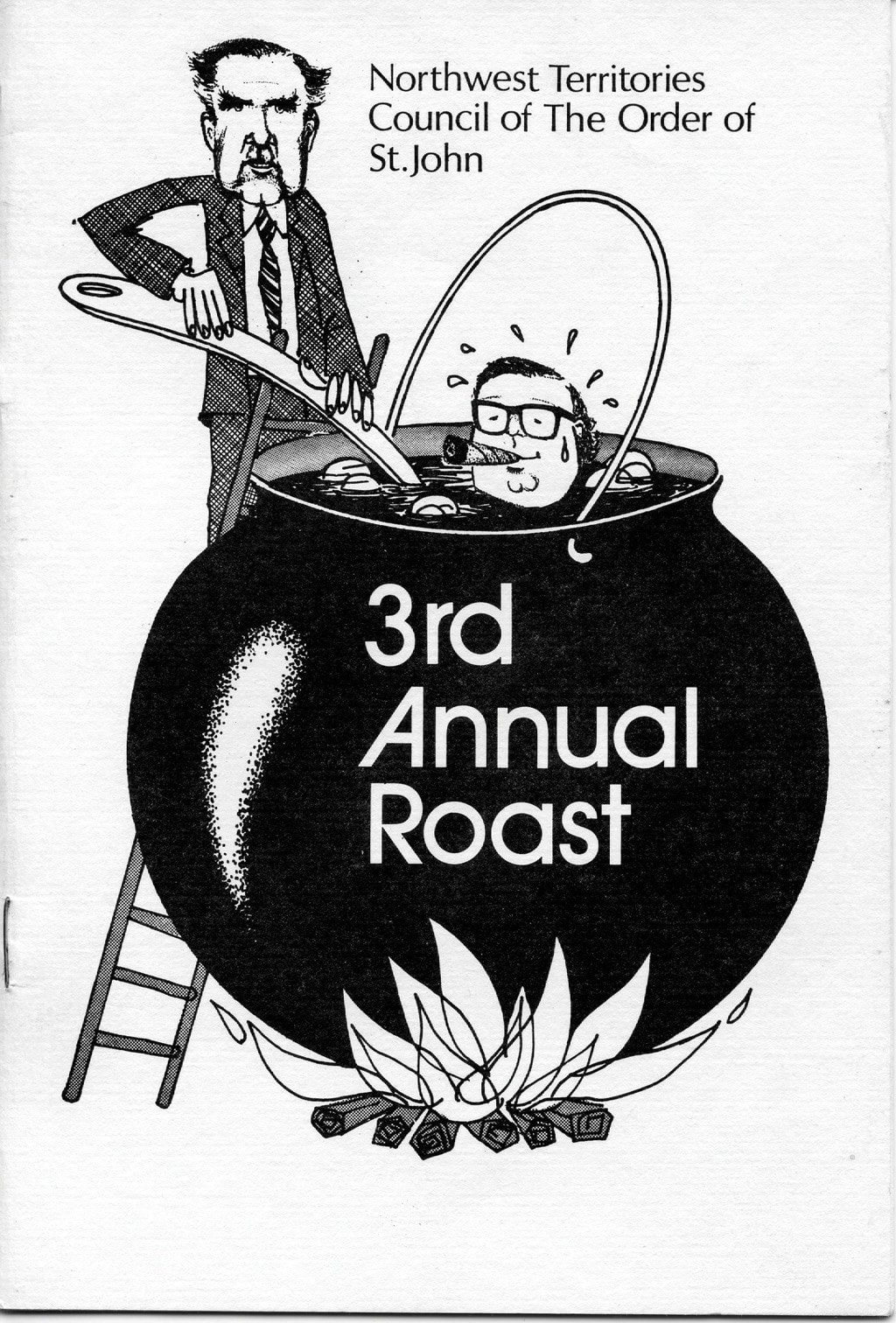
Stuart Hodgson ladling the pot holding MLA David Searle on the program cover for the St. John Ambulance NWT 3rd Annual Celebrity Roast in Feb. 3, 1978. Credit: N-2010-005: NWT Archives/Stuart M. Hodgson fonds/N-2010-005: 78-4
There are files upon files of greeting cards and brief personal notes. Many are to other politicians and people of some import, and many of those are personalized by Stuart with fond recollections of time spent together, whether discussing or travelling the Northwest Territories. After returning from a visit to Greenland to compare notes on circumpolar governance, he personally wrote every official he met to thank them for the warm reception he received in Godthaab – from mayors to fur garment workers – and made pains to include personal details regarding their time together, such as: “Thank you for inviting us to your home for coffee, this was very thoughtful of you and appreciated by all in my party, as we were somewhat chilled and wet by the heavy rain.”
Stuart was also the spearhead behind Travel Arctic, the first public relations campaign to attract tourists (in conjunction with the major marketing campaign behind the NWT Centennial in 1970, which saw the Royal Family visit), as well as creating the Arctic Winter Games, which to him was as much about building relationships with circumpolar neighbours as it was about sport. He toured the Northwest Territories relentlessly, going to every community every year or two. This was when the Northwest Territories included Nunavut, and he made it his mission to bring government to the people with his boots on the ground, always with a keen sense of the importance of the past.
Stuart was president of the Franklin Probe, a society that aimed to search for and preserve relics of the lost Franklin expedition. He urged Inuit elders to tape their stories so oral traditions could be preserved, earning him his nickname Umingmak. He also was very keen to have a Museum of the North, now known as the Prince of Wales Northern Heritage Centre (a name owing much to the relationship he built with the Royal Family) – the building where I now work.
On the day I met him in person, Stuart and his family had just finished their lunch at the Museum Café and made a stop at the NWT Archives to greet the territorial archivist and me prior to heading over to the 20th anniversary celebrations for the Legislative Assembly building. As he flattered me and told a few stories of his time in the North, I thought about the power dynamic between us as past and present civil servants.
Where Stuart was the midwife of the territorial government, I am a steward of the original documents the public can see and use to understand his perspective during this period of our collective northern history. We both are in the business of preserving history for future generations. In that sense, we work from the same page.

Stuart Hodgson talking to a man near an airplane fuselage. It appears to be an Inuit community above the treeline. CREDIT: NWT Archives/Stuart M. Hodgson fonds/N-2010-005: 0082

